
Man managing interconnected systems via a central hub.
Containers have had an immense impact on the way we build, deploy, and manage applications and networks. They provide a standardized environment containing all of the dependencies needed to run an application, including runtime, libraries, and tools. Containers also solve one of the key challenges with virtual machines: They are easy to create and can […]

Containers have had an immense impact on the way we build, deploy, and manage applications and networks. They provide a standardized environment containing all of the dependencies needed to run an application, including runtime, libraries, and tools. Containers also solve one of the key challenges with virtual machines: They are easy to create and can be destroyed without any long-term commitment or overhead.
Containers are a popular way of packaging applications to ensure data practitioners can quickly move them between different environments, such as development and production. However, for containers to work, they need to be able to communicate with other containers and the hosts they’re running on.
This is where container networking comes in. Container networking software provides basic virtual networks for containers, which allows them to communicate with each other on the host machine or across multiple hosts.
Container networking software lets you connect your containerized applications to the network and each other, much like virtual machines do with virtual networks and virtual machines, respectively.
Container networking software can build highly available multi-container applications that scale quickly and increase data accessibility. This enables container-to-container connectivity across different hosts and clusters, allowing more container management flexibility.
Container networking software enables containerized applications to communicate with each other on a single host or across multiple hosts. As containers are designed to be small, modular, and lightweight, the need for a separate operating system (OS) layer becomes obsolete. With this in mind, the container networking layer should be as simple as possible to maximize portability.
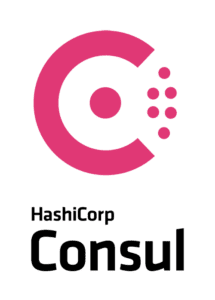
HashiCorp Consul enables teams to manage secure network connectivity between services across multicloud environments. Additionally, it helps with runtime process discovery by providing a single point of truth for service-to-service communication.
It can also scale applications that use containers because the software provides automatic load balancing and service discovery. HashiCorp Consul can make managing container networks easier by providing a single point of truth for service-to-service communication and automating load balancing and service discovery.
| Open Source | Cloud | Enterprise |
| Free | Development: Starting at $0.027/hr | Contact sales for price |
| Standard: Starting at $0.069/hr | ||
| Plus: Starting at $0.104/hr |

Weave Net by Weaveworks is a cloud-native container networking software that provides an overlay network for containers. Data professionals can use it in any environment with Docker, where they want containers to communicate across multiple hosts, even on different platforms or clouds.
It automates the provisioning of virtual networks, meaning containers are automatically configured, and users don’t have to write codes to do so. In addition, Weave Net has valuable add-ons such as DNS, Internet Protocol address management (IPAM), and distributed firewall management.
This tool has a free version. However, quotes for the basic, team, and enterprise plans are available on request.

Project Calico is an open-source project that provides a container networking stack to deliver performance, security, and visibility for containers, virtual machines, and native host-based workloads. Unlike some network solutions designed specifically for Docker, it supports a broad range of platforms, including Kubernetes, OpenShift, Docker EE, OpenStack, and bare-metal services.
This solution is available in three editions. They include Open Source (free), Calico Cloud (14-day free trial available, then pay-as-you-go), and Calico Enterprise (quotes available on request).

Converged Cloud Fabric (CCF) is a container networking software solution that provides scaling, security, and automation for enterprise networks. CCF reduces complexity by supporting physical and virtual topologies to form a single converged fabric. Its ability to scale from small to large deployments and its support for physical and virtual topologies allow organizations to deploy CCF in any environment.
With CCF, customers can eliminate the need for multiple applications or devices to manage containers; one programmatic interface does it all. In addition, CCF integrates with private cloud platforms such as VMware vSphere/NSX/vSAN, DellEMC VxRail HCI, Nutanix HCI, Microsoft Hyper-V, Kubernetes containers, and OpenStack.
Quotes are available on request.
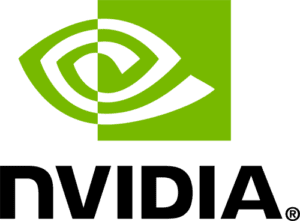
NVIDIA’s Cumulus Linux is an open network operating system (NOS) that enables enterprises to bring the cloud’s agility, economics, security, and efficiency to their data center network infrastructures.
Built on top of a standard Linux kernel, Cumulus empowers users with unprecedented flexibility in creating multi-tenant networks across the physical or virtual infrastructure. The OS also provides an intuitive command-line interface for managing containers, routing tables, switching configurations, and other aspects of the network.
Prospective buyers can contact the NVIDIA sales team for quotes.
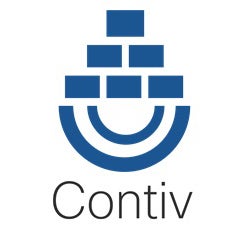 Contiv is an open-source networking fabric that unifies containers, virtual machines, and bare metal across clouds. Contiv can operate in Layer 2, Layer 3, overlay, or Application Centric Infrastructure (ACI) modes to provide the proper connectivity for your application.
Contiv is an open-source networking fabric that unifies containers, virtual machines, and bare metal across clouds. Contiv can operate in Layer 2, Layer 3, overlay, or Application Centric Infrastructure (ACI) modes to provide the proper connectivity for your application.
In addition, cloud architects and IT admin teams can use Contiv to build, govern, and reliably enforce operational rules, including multi-tenant traffic isolation, microsegmentation, bandwidth prioritization, latency requirements, and L4–L7 network service regulations.
Interested buyers can contact sales for personalized quotes.
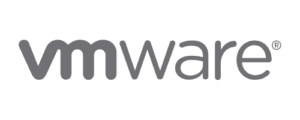
VMware NSX is an enterprise-grade container networking solution that delivers full-stack networking and security for containerized applications and microservices. VMware NSX enables enterprises to build modern, agile software-defined networks (SDNs) without needing costly hardware upgrades or rip-and-replace cycles.
VMware NSX delivers a new level of control that allows users to build, connect, configure, monitor, and troubleshoot application environments. In addition, they can apply policies at any point in the network stack, including access controls, quality of service (QoS), load balancing, firewalling, and encryption.
Pricing is available on request.

F5 NGINX acts as a reverse proxy, load balancer, Secure Sockets Layer (SSL) terminator, cache server, content delivery network (CDN), application firewall, and web server. In addition, F5 NGINX provides high availability for web servers by acting as a load balancer or Transmission Control Protocol (TCP) health monitor. If an instance goes down, it will automatically fail to another available instance.
The service also supports cloud infrastructure providers like AWS, Azure, Google Cloud Platform, IBM Private Cloud, and Diamanti, which means new instances can be provisioned in the cloud on demand.
NGINX open source can be downloaded for free. However, prospective customers should contact the NGINX sales team for quotes.
 Istio
IstioIstio is an open-source service mesh that helps manage the complexity of microservices environments by providing a layer of control across the various components. Istio provides functionality to manage traffic flow between services, monitors service usage and quality of experience, enforces access policies, and provides telemetry data for debugging. Istio also ties in with other systems like Prometheus for monitoring and Grafana for dashboards to create an end-to-end solution.
Pricing details aren’t provided on the vendor’s website. However, the sample application is available for download.
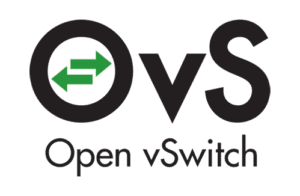
Open vSwitch (OVS) is an open-source virtual switch licensed under Apache 2.0. OVS enables extensive network automation through programmatic extension while supporting standard management interfaces and protocols. The project was founded by Nicira Networks in 2009 and was later acquired by VMware. VMware maintains OVS as part of its NSX product line for data center networking.
This tool can be downloaded for free.
Container networking software makes it easier for developers to deploy, manage, and connect containers across different networks. In addition, the software simplifies containers’ connection to communicate with other containers on their network.
Choosing the best container software depends on the enterprise’s needs. For example, some enterprises may require networking capabilities such as static routing, IP-in-IP encapsulation, and L2 bridging. Others may want to deploy containers in an OpenStack environment or run them with a hypervisor. Or enterprises might need to deploy containers across multiple networks.
Some container software provides limited features; others offer a far wider toolset. Understanding the features needed for your specific use case will help you determine which product to choose.
For example, if all that’s required is connectivity between containers within a single network segment, installing container network interface (CNI) drivers will be sufficient. On the other hand, if additional requirements include security policies, fault tolerance, and scalability, software that supports these features would be necessary.
The important thing is to ensure that the selected software meets your requirements without any unnecessary extras. To get a better idea of whether any container software meets your needs, look at the vendor’s website for demos and guides about how it works.
Reviews from fellow users on third-party websites are also helpful because they provide unbiased information about how well different solutions perform against one another in terms of key criteria like security, management support, and ease of deployment. These resources should give you an idea of which type of container software best suits your needs before making a purchase decision.

Aminu Abdullahi is an experienced B2B technology and finance writer and award-winning public speaker. He is the co-author of the e-book, The Ultimate Creativity Playbook, and has written for various publications, including eWEEK, Enterprise Networking Planet, Tech Republic, eSecurity Planet, CIO Insight, Enterprise Storage Forum, IT Business Edge, Webopedia, Software Pundit, and Geekflare.

Enterprise Networking Planet aims to educate and assist IT administrators in building strong network infrastructures for their enterprise companies. Enterprise Networking Planet contributors write about relevant and useful topics on the cutting edge of enterprise networking based on years of personal experience in the field.
Property of TechnologyAdvice. © 2025 TechnologyAdvice. All Rights Reserved
Advertiser Disclosure: Some of the products that appear on this site are from companies from which TechnologyAdvice receives compensation. This compensation may impact how and where products appear on this site including, for example, the order in which they appear. TechnologyAdvice does not include all companies or all types of products available in the marketplace.